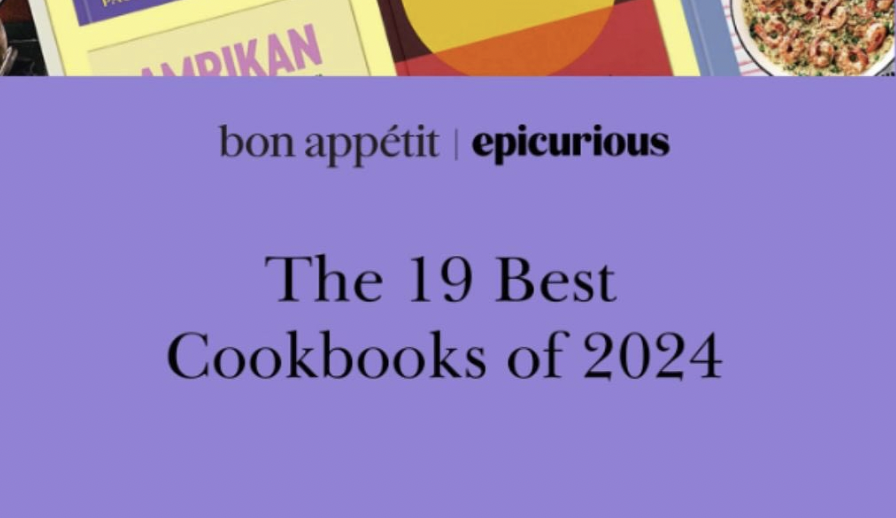new
new
Wafu Cooking Reviews
-
A weeknight cooking Bible.
—ERIC KIM, The New York Times
-
Sonoko Sakai’s Wafu Cooking is absolutely exquisite—a cookbook, yes, but also a guide and a map to the intricacies and love woven into Japanese cuisine. Approachable and expansive, Wafu Cooking is truly tremendous.
—BRYAN WASHINGTON, author of Family Meal
-
Each recipe is a thoughtful conversation between Japanese ingredients or techniques and those from the rest of the world . . . Like any cookbook that will spend more time off my bookshelf than on it, there are countless others that I want to try.
—EMMA LAPERRUQUE, Bon Appétit
-
Sakai creates her own wafu recipes, including dashi cheese grits with miso honey butter, Japanese Italian wedding soup (she adds soy sauce and sake to her meatballs), Caesar salad with aonori croutons and bonito flakes, eggplant katsu curry, fish and lotus chips with wasabi tartar sauce, and balsamic shio koji chicken. They reflect a foundation in Japanese cuisine, matched with international influences and her passion for California’s bounty—citrus, persimmons, avocados, chiles and greens among them. Fresh and fun.
—Los Angeles Times
-
The chapter on breakfast is an inspiration, offering dashi cheese grits, toasted onigiri with miso-honey butter, maple tamagoyaki, a riff on the traditional omelet, and more. And that’s just the first meal of the day! Miso soup meets collards, cabbage, and bacon, and it’s like they’ve been friends forever. Seafood takikomi gohan is like Japanese paella. There’s a chilled spicy ramen salad, and miso in the Bolognese. Everybody loves sushi, but there’s more to life.
—The Boston Globe
-
Maybe we need a place for the book (besides the banner) Sakai’s masterful deployment of Japanese flavors is sure to enliven your everyday dishes, so pair this with a special bottle of sake for a perfect holiday gift.
—Saveur
-
Sonoko Sakai’s love and respect for Japanese food comes through with every dish and recipe. She always does a wonderful job sharing the essence of Japanese food, and I know that readers will find the journey joyful and inspiring.
—NIKI NAKAYAMA, chef/owner of Michelin 2-starred n/naka
-
New List ItemI learned so much from reading Sonoko’s enticing recipes and deft informative notes, and from the beautiful photographs here. Sonoko invites us to use traditional Japanese techniques and flavorings to add depth and distinctiveness to familiar dishes, from roast chicken, hummus, and ceviche, to lasagna, bread, and ice cream. A stunning achievement.
—NAOMI DUGUID, author of The Miracle of Salt, Taste of Persia, and Burma: Rivers of Flavor
-
New List Item
Forbes Magazine
Over the years, I’ve had the privilege to teach and share my passion for Japanese cooking. Apart from writing books, I’ve also contributed articles in publications and worked alongside esteemed journalists, food critics and cookbook authors. Here are some of their reviews and articles I’ve written.

“Great soba doesn’t quite exist in Los Angeles, except possibly when Sonoko Sakai is doing one of her occasional soba pop-ups.
”
“Soba saved me,” she (Sakai) said. A movie buyer and producer raised in New York, Mexico, and Japan, Sakai lived a big life in the presence of stars. But seven years ago, she finished producing a difficult film, one that burned her out, and she took more and more satisfaction in learning about noodles on her business trips to Japan. The day Sakai thought it would be a good idea to leave her clothes behind and fill her luggage with buckwheat flour was the day she knew her life had changed. “I stripped everything out of my life that I didn't need.” Now she teaches the meditation of noodle making. “I like the scale of making food,” she said, and so she committed herself to the intimacy, the humanness, the smallness of a simple craft that you make, serve, and watch disappear over and over again.
Francis Lam – Food writer. Story excerpt from The Art of Soba Noodles, Saveur
“Sonoko Sakai is a master of the art of flavor and texture development in all things delicious, especially heritage grain cookery where her insights and originality from garden and field to bowl are unparalleled.” ”
“Sonoko Sakai is a soba master! I’ve had her exceptional noodles a number of times, most memorably at dinners in Los Angeles restaurants on my behalf when touring my cook books, Vegetable Literacy and The New Vegetarian Cooking For Everyone.They were so delicious and had such a good texture that I was honored that they were being cooked and served as a part of my meal. I wish all soba noodles were as good! I did learn to make soba noodles from a Zen Master at one point in my life. He wanted them every 5 days for his day-off lunch, so I know from that experience that it takes a great deal of practice to turn out a good noodle and even more to turn out one of Sonoko’s quality.”
Deborah Madison –author of The New Vegetarian Cooking for Everyone
“There are quite a few good cooks around. And there are good teachers, too. And good writers. But Sonoko Sakai is one of the very, very small number who can do all three exceedingly well. Sonoko is not only a terrific cook, inventive but with a deep understanding of traditional flavors, but she has the rare gift of being able to teach you to appreciate and replicate those as well. And through her written stories and anecdotes, she places the food she’s created in a contemporary context. Raised with a foot in each country, she is able to explain Japanese culture to Americans in a way that Americans can best understand it. The fact that cooking is her medium and that she does it so well makes those lessons delicious.”
Russ Parsons – Former columnist and food editor for the Los Angeles Times Food Section
“Sonoko Sakai is an amazing chef and teacher. She demonstrates an uncommon sense of direction in her creations and the results are always pure uncompromising beauty and flavor.
”
Article Contributions
Book Contributions
All About EGGS (2017)
By Rachel Khong and the Editors of Lucky Peach
Published by Random House USA Inc


















